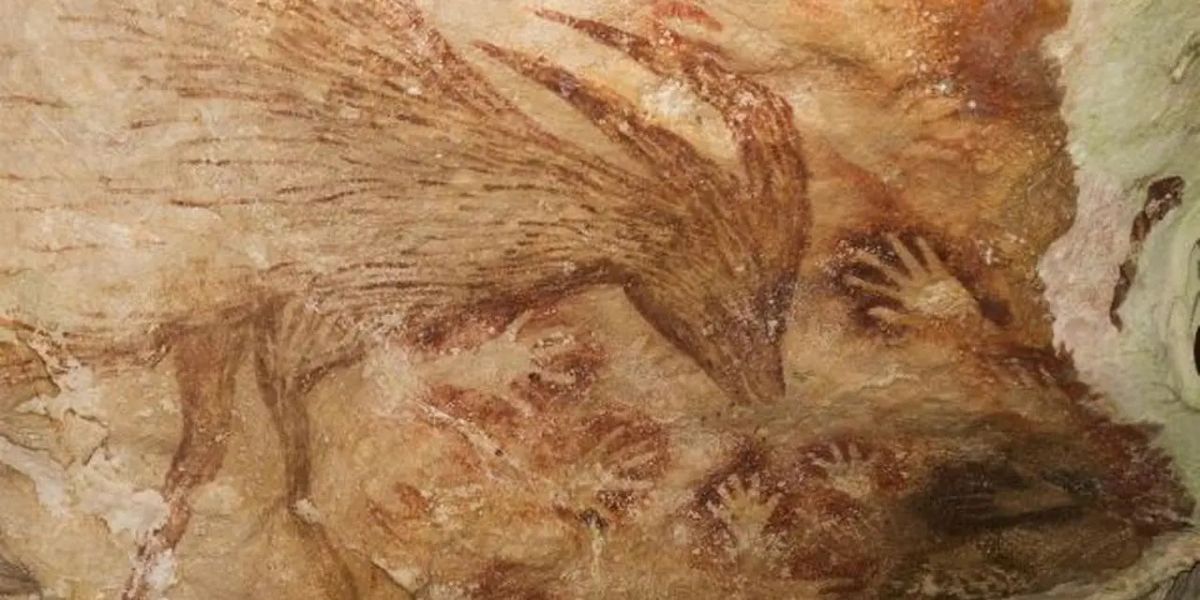Kapanlagi.com - This extraordinary discovery has once again put Indonesia on the map of global archaeological research. A team of scientists from the National Research and Innovation Agency (BRIN) along with international collaborators has discovered the oldest cave painting ever, located in the Leang Karampuang limestone cave in Maros Regency, South Sulawesi. Interestingly, this painting has been confirmed to be 51,200 years old.
This monumental finding is the result of close cooperation between BRIN, Griffith University, Southern Cross University, Hasanuddin University, the Cultural Preservation Office (BPK), and the Maros Regency Government. The results of this research have even been published in the prestigious journal, Nature, making it one of the most significant discoveries in the field of archaeology today.
"This is certainly a pride for all of us, not only for us at BRIN but also for the Indonesian people, that we have explored, through a long excavation process, proving that there is wall art in a cave that has been confirmed to be 51,200 years old," said the head of BRIN, Laksana Tri Handoko, as quoted from menpan.go.id.
1. The Discovery of Prehistoric Paintings in Leang Karampuang
An extraordinary discovery has changed our perspective on prehistoric art in Indonesia! A research team from the National Research and Innovation Agency (BRIN) along with its academic partners conducted archaeological explorations in the Maros-Pangkep region of South Sulawesi and found something very surprising inside the Leang Karampuang Cave. This limestone cave, long believed to hold treasures of ancient art, turns out to contain paintings depicting the interaction of three human-like figures with wild boars.
The head of the research team, Adhi Agus Oktaviana, revealed that these paintings belong to the category of figurative art, demonstrating the ability of prehistoric humans to convey stories through images. "This discovery is very surprising because there are no artworks from the European Ice Age that are comparable in age to the cave paintings in Sulawesi, except for a few controversial finds in Spain. This is the oldest rock art in Indonesia, over 50,000 years old," he said, quoting the BRIN website.
Adhi added that this discovery serves as evidence that the culture of storytelling through art existed much earlier than we previously thought.
2. Cutting-Edge Technology in the Dating of Paintings
In an effort to uncover the mystery of the age of prehistoric paintings, a research team is utilizing a cutting-edge innovation called Laser Ablation U-Series (LA-U-series). With this advanced technology, scientists can analyze the thin layers of calcium carbonate that coat the pigments of the paintings with remarkable accuracy.
Professor Maxime Aubert from Griffith University, one of the pioneers of this method, emphasizes that LA-U-series provides data that is much more precise compared to previous techniques.
"This technique is very effective in detecting layers of calcium carbonate, thereby increasing the accuracy of the resulting data," said Aubert, quoting the Kemenpar website.
Interestingly, this technique is also applied to study rock art at the Leang Bulu' Sipong 4 site in Maros-Pangkep, and the results are surprising: several paintings that were initially estimated to be 44,000 years old are actually older, reaching about 48,000 years.
3. Meaning and Implications of This Discovery
This discovery has a significant impact on understanding the history of prehistoric human art. Previously, the widely known figurative rock art originated from the Paleolithic era in Europe. However, with this finding, it is clear that prehistoric humans in Southeast Asia had an older artistic tradition.
"Essentially, humans have had the ability to communicate in the form of stories for more than 51,200 years, but because words cannot fossilize, what remains is only representations in the form of art," said Oktaviana.
This finding also indicates that cave art was not only used as decoration but also as part of communication and the narrative of prehistoric human history. This opens up opportunities for further research on the origins of storytelling culture in human evolution.
4. Research Collaboration and Conservation of Sites
The cross-institutional collaboration between BRIN and various universities and research institutions, both domestically and internationally, has resulted in exciting and valuable discoveries for the academic world. These findings are not just achievements but also serve as a reminder of the urgency of conserving archaeological sites in Indonesia.
Herry Jogaswara, Head of the Archaeology, Language, and Literature Research Center at BRIN, emphasized that this research demonstrates how long-term collaboration can have a significant impact on science. Meanwhile, the Regent of Maros, Chaidir Syam, could not hide his pride in this remarkable achievement.
5. Potential for Tourism and Art Education in Cadas
Amazing discoveries in the Maros-Pangkep region have the potential to transform it into a world-class educational tourism destination! In an exciting collaboration between BRIN and Google Arts & Culture, the wonders of prehistoric cave art can now be enjoyed digitally, allowing the wider community to explore and learn about the beauty of this cultural heritage without having to set foot in the original location.
Ariana Santoso, Government Relations and Public Policy Manager at Google Indonesia, revealed that this advanced technology can reconstruct how ancient humans painted on cave walls thousands of years ago, which is expected to further enhance our appreciation for Indonesia's extraordinary cultural wealth.
6. People Also Ask
1. Where was the oldest cave painting in the world found?
The oldest cave painting in the world was found in Leang Karampuang, Maros-Pangkep, South Sulawesi, Indonesia. It is estimated to be about 51,200 years old.
2. What is depicted in the painting?
The painting depicts three human figures interacting with a wild pig, indicating a form of narrative communication since prehistoric times.
3. How did scientists determine the age of the painting?
Scientists used the Laser Ablation U-Series (LA-U-series) method to analyze the calcium carbonate layers covering the painting, resulting in more accurate findings.
(kpl/rmt)
Disclaimer: This translation from Bahasa Indonesia to English has been generated by Artificial Intelligence.












